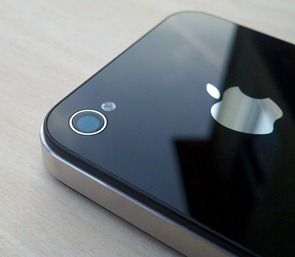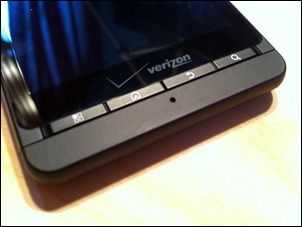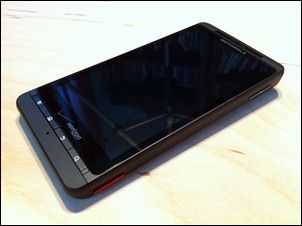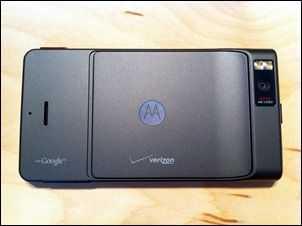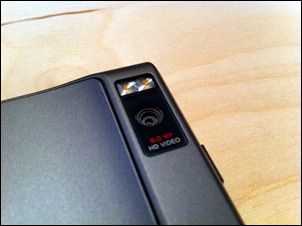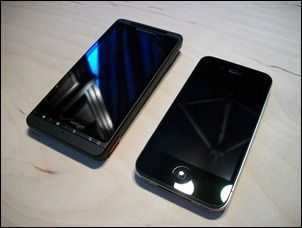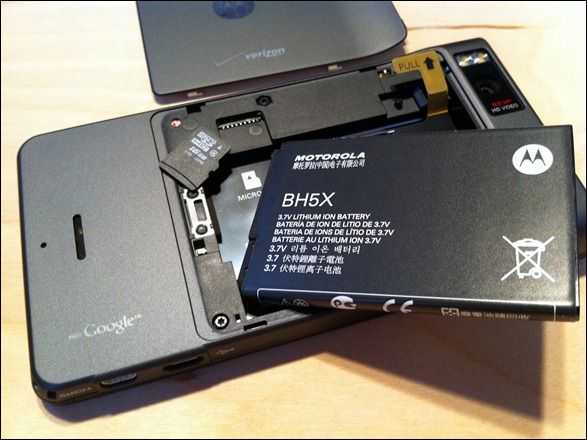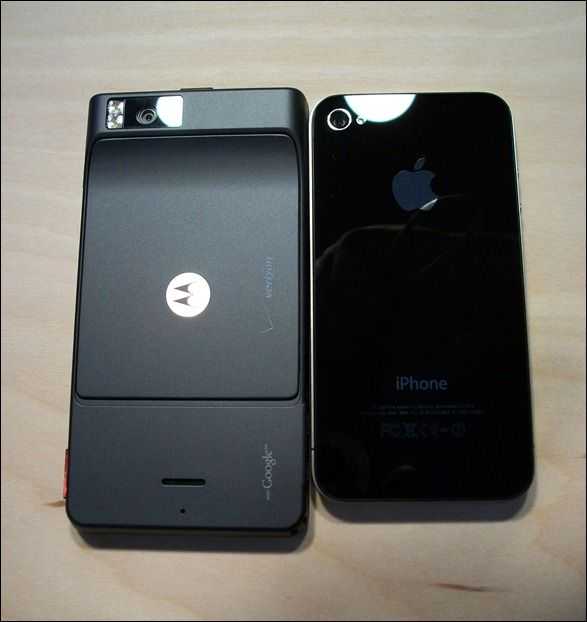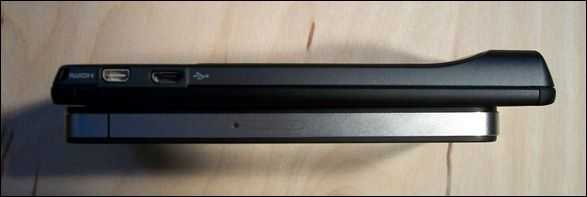While I dropped some test images and videos comparing the iPhone 4 and Droid X myself, I wanted to highlight and article over at tnkgrl Mobile which has more comparison info and a detailed write-up of the strengths and weaknesses in the cameras of each phone. If you are looking for a phone with a good camera, you are definitely looking in the right direction with the Droid X and iPhone 4, but between those two, finding which one fits you might just depend on which type of user you are.
Tag Archive | "motorola droid x"
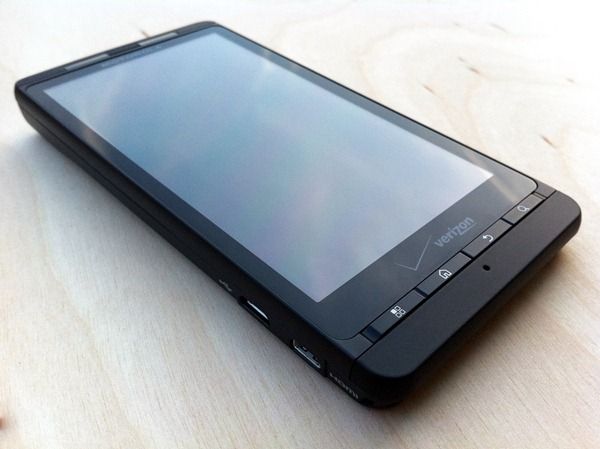
Motorola Droid X Review
Posted on 21 August 2010
 Motorola’s new Droid X is one of three recently released Android phones that are part of Verizon’s “DROID inch branding and advertising campaign. Does this phone stand up to the competition? Read on to find out.
Motorola’s new Droid X is one of three recently released Android phones that are part of Verizon’s “DROID inch branding and advertising campaign. Does this phone stand up to the competition? Read on to find out.
Hardware
Here’s a quick rundown of the Droid X’s specs before we get started. Don’t forget to check out our Droid X tracking page for additional specifications, images, news, and more.
- OS: Android 2.1 (at the time of writing)
- Screen: 4.3 inch capacitive touchscreen @ 854×480
- CPU: TI OMAP 3630 @ 1GHz
- GPU: PowerVR SGX 530
- RAM: 512MB
- Camera: 8MP auto-focus with dual-LED flash (720p video recording capable)
And now, a look around the phone:
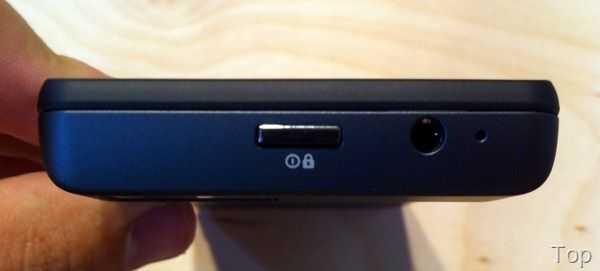
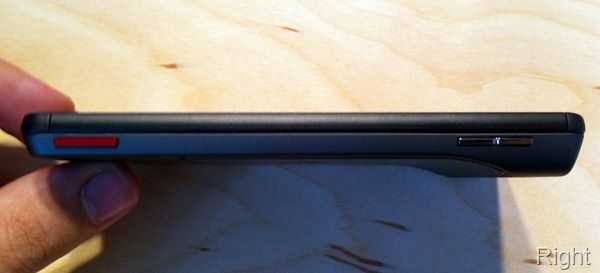

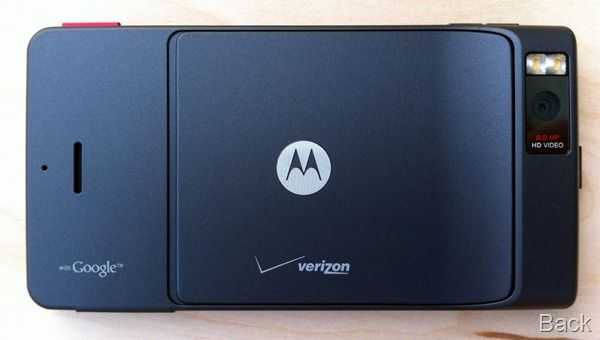
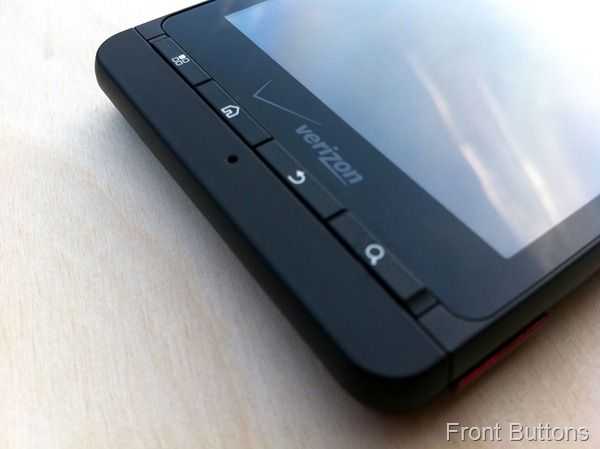
Design
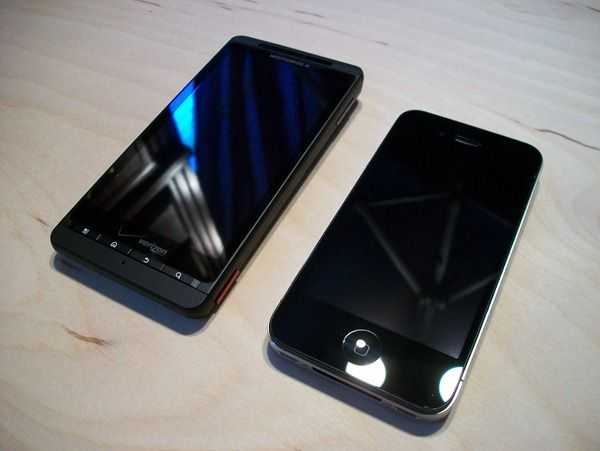 The Droid X’s most immediately noticeable feature is certainly it’s size. At 4.3 inch, it’s just shy of being the largest Android phone that we’ve seen second only to the Dell Streak’s 4.8 inch screen [portal page].
The Droid X’s most immediately noticeable feature is certainly it’s size. At 4.3 inch, it’s just shy of being the largest Android phone that we’ve seen second only to the Dell Streak’s 4.8 inch screen [portal page].
The Droid X is a fairly well built phone and it feels like a just like a little slate in the hands. There is an odd vibration to it that you’ll feel if you tap it with your fingers; particularly on the back. This vibration makes the phone feel a bit less solid than I’d like, and in particular, it feels somewhat less solid to me than the Droid 2 [portal page], despite the fact that the Droid 2 is a slider and has moving parts, while the Droid X does not.
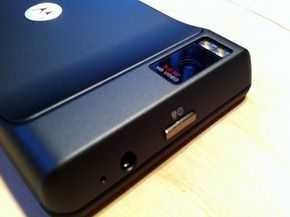 The phone isn’t perfectly flat on the back. Instead, it has a raised area where the camera is located. This area likely holds the phone’s antennas as well as some of the parts necessary for the camera. It isn’t at all obtrusive to the use of the phone and seems to add some subtle but welcomed curves to a phone that would otherwise be a black rectangle. The back of the Droid X is coated in a cool rubberized material which I really enjoy the feel of. The coating colors the back in a grey matte that is definitely meant to appeal to one gender in particular.
The phone isn’t perfectly flat on the back. Instead, it has a raised area where the camera is located. This area likely holds the phone’s antennas as well as some of the parts necessary for the camera. It isn’t at all obtrusive to the use of the phone and seems to add some subtle but welcomed curves to a phone that would otherwise be a black rectangle. The back of the Droid X is coated in a cool rubberized material which I really enjoy the feel of. The coating colors the back in a grey matte that is definitely meant to appeal to one gender in particular.
I’m not too pleased with the quality of the hardware buttons on the Droid X. The volume rocker and lock/power buttons are top-notch in their firmness and click-ability, however, the longish camera button could be used as a mini-seesaw and the four front buttons aren’t much to write home about either.
Screen
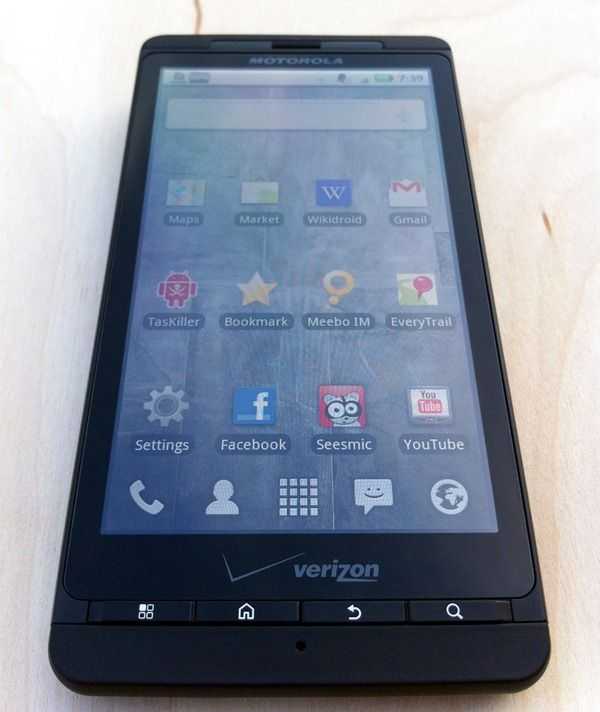 The Droid X’s 854×480 screen can get quite bright (about as bright as the iPhone 4), but it tends to become slightly washed out with only a slight change in viewing angle (say, 45 degrees from perpendicular). To its credit though, the screen doesn’t go from “slightly washed out inch to “totally washed out inch as you continue to increase the viewing angle it pretty much holds on to “slightly washed out inch all the way through to 179 degrees. The Droid X’s screen represents colors acceptably, except it is slightly lacking in vibrancy in the green part of the spectrum (compared to other smartphones).
The Droid X’s 854×480 screen can get quite bright (about as bright as the iPhone 4), but it tends to become slightly washed out with only a slight change in viewing angle (say, 45 degrees from perpendicular). To its credit though, the screen doesn’t go from “slightly washed out inch to “totally washed out inch as you continue to increase the viewing angle it pretty much holds on to “slightly washed out inch all the way through to 179 degrees. The Droid X’s screen represents colors acceptably, except it is slightly lacking in vibrancy in the green part of the spectrum (compared to other smartphones).
The Droid X’s large screen makes typing with the default keyboard fairly easy, and for this reason, I’d definitely recommend it if you have larger hands and want an Android phone, but have found the keyboard on previous phones too squished to be accurate (and aren’t willing to get used to Swype). For me, personally, the Droid X is just a little bit too large. It’s not too comfortable to have my thumb traverse such a large space, especially when the design of Android asks that I reach to the extremes during every-day use. For instance, I might get a notification which requires that I reach all the way to the top and pull down the status bar to read it. Then I might desire to return to the home screen which requires a press of the home button which is all the way at the bottom of the phone (even a little bit further than the bottom of the screen). My hands are slightly on the small end, and not everyone is going to feel the same way; for me, the screen is just a bit too big for comfortable use. On the other hand, the Droid X’s large screen makes it great for use with Google Navigation (more on this in the software section).
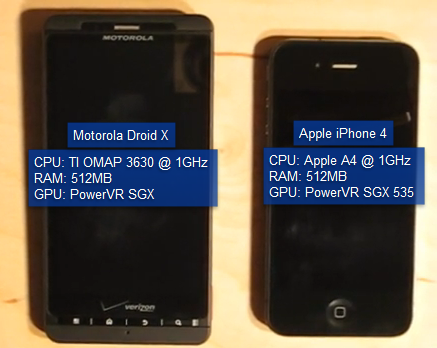
Droid X vs. iPhone 4 – Speed Test
Posted on 08 August 2010
Sunspider Javascript Benchmark
I ran the Sunspider javascript benchmark on both devices. While the benchmark is quite dependent on browser performance, it is also an indicator of CPU ability, as well as a cross-platform benchmark, allowing us to compare both the iPhone 4 and Droid X from a more objective perspective. I used the default browser on each phone for the test.
On average, the iPhone 4 was 1.3x as fast the Droid X (click to view detailed test results):
(smaller ms is better)
Droid X – Total: 13,511.2 ms +/- 1.2%
iPhone 4 – Total: 10,401.4 ms +/- 1%
I also gave the Sunspider benchmark a try using a different browser than Android’s default. I used Dolphin Browser HD to run the test and actually resulted in a slower score (around 16,000 ms).

Droid X vs. iPhone 4 Camera Test (video and stills)
Posted on 22 July 2010
While the Droid X [portal page] beats the iPhone 4 [portal page] in a straight-up megapixel to megapixel comparison by 3 megapixels (Droid X’s cam is 8 MP while iPhone 4’s is 5 MP), the iPhone 4 uses a fancy back-illuminated sensor, which enhances it’s ability to capture light, according to Apple.
The Droid X supports 720p HD recording, just as the iPhone 4, and interestingly, the Droid X has a mechanical shutter. The Droid X also has a dedicated two-stage camera button which focuses and captures, as well as a dual-LED flash. The iPhone has a single LED flash. Additionally, the Droid X can upload HD video directly to YouTube, whereas the iPhone 4 has to have the video put onto a computer and uploaded to YouTube for HD quality (Apple plans on updating this at a later time, so it’s a software restriction, not hardware).
Below I’ve taken some shots with both the Droid X and the iPhone 4 for comparison. The videos were both taken from the respective devices and uploaded to YouTube through a computer, just to ensure that no compression was taking place during the phone upload process.
Because this is a camera comparison post, I’ve bumped up the click-through pictures to a larger than usual resolution, so be sure to click on them for a more detailed view.
General
Macro
High Light
Medium Light
Low Light
Low Light (with flash)
Video
If you have a powerful computer and you’d like to watch these videos side-by-side, give this link a try. Slower computers will likely stutter if you try to run both in HD at the same time.
The iPhone has somewhat of an unfair advantage as it has auto-exposure adjustment, while the Droid X requires manual adjustment in the settings menu of the camera app. All pictures taken with the Droid were at an exposure of 0 (it ranges between -3 and +3) but just for comparison’s sake, here is the Low Light Droid X shot with the exposure turned up to +3 along side the same iPhone 4 Low Light shot that you saw above.
It’s hard to say which of the two has a better dynamic range, but the iPhone 4 seems to have more vibrant colors (not necessarily more accurate, however). The iPhone 4’s HD video also looks noticeably better than the Droid X’s in terms of sharpness and framerate, though the Droid X doesn’t seem to focus its camera before shooting HD video which is somewhat odd.
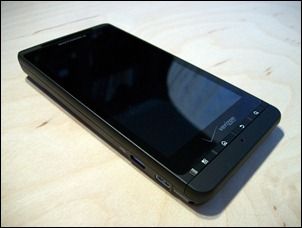
Droid X Gallery and iPhone 4 Size Comparison
Posted on 22 July 2010
I just shot some pictures of the Droid X [portal page] and a few with the phone next to the iPhone 4 for reference. Here are a few choice photos, and you can find the full set in the Droid X’s gallery page. Stay tuned camera comparison is coming up next.
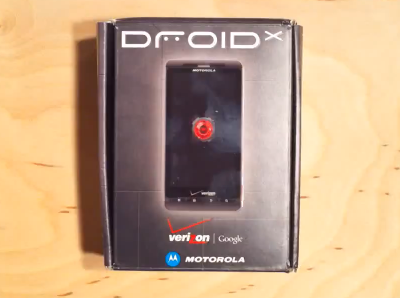
Motorola Droid X Unboxing video
Posted on 21 July 2010

The Droid X [portal page] just showed up today and we’ve got a quick unboxing with more coverage coming soon! Check it out:
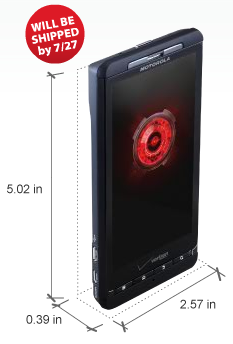
Droid X Officially Launched in the US – “Shipped by 7/27”. Verizon Launched Head-tracking “3D” Droid Site
Posted on 17 July 2010
 The Droid X [portal page] can now be officially purchased through Verizon. New customers can snag one for $199 with a new 2 year contract, and existing customers eligible for an upgrade can re-up for another 2 years and receive the same $199 pricing. Like all the Droid phones (and other Verizon smartphones) Verizon requires a data package of $29.99 or more for use with the phone.
The Droid X [portal page] can now be officially purchased through Verizon. New customers can snag one for $199 with a new 2 year contract, and existing customers eligible for an upgrade can re-up for another 2 years and receive the same $199 pricing. Like all the Droid phones (and other Verizon smartphones) Verizon requires a data package of $29.99 or more for use with the phone.
The Droid X officially launched on the on the 15th, but they appear to be backordered as the site currently says “Due to high demand, this device will ship by 7/27”. Surprisingly, that date is sooner than the shipping date on the similarly speced Droid Incredible (by HTC) which launched back at the end of April.
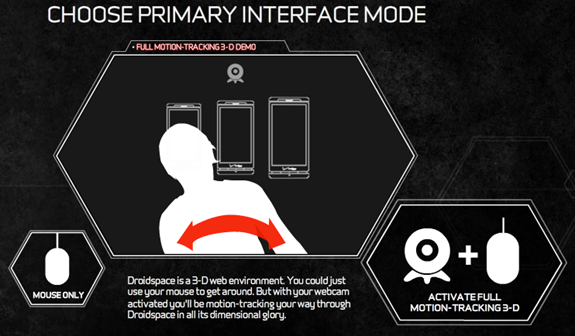 Verizon has launched a new Droid site featuring the original Droid [portal page] the Droid X, and the Droid Incredible. The flash based site has a rather novel head-tracking option which, upon being given access to your webcam, will tilt the content from side to side as you move your head around. The idea here is to make it feel as though you are able to look around the phones, but the effect isn’t convincing. The site also doesn’t run very smoothly without a powerful computer.
Verizon has launched a new Droid site featuring the original Droid [portal page] the Droid X, and the Droid Incredible. The flash based site has a rather novel head-tracking option which, upon being given access to your webcam, will tilt the content from side to side as you move your head around. The idea here is to make it feel as though you are able to look around the phones, but the effect isn’t convincing. The site also doesn’t run very smoothly without a powerful computer.
If you’d like to compare the original Droid and the Droid X (both by Motorola), this link will take you to a comparison sheet provided by our product database over at UMPCPortal.com.
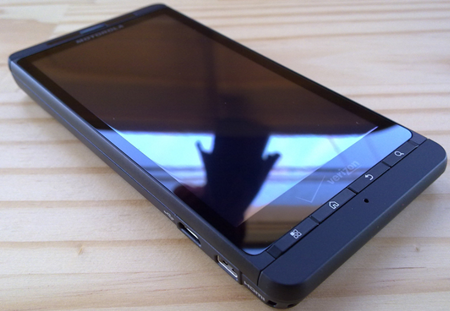
Motorola Droid X Unboxed, Now Tracking in the Portal
Posted on 08 July 2010
 I’ve been quite surprised by how many of my non-tech friends have heard of the Motorola Droid X. Generally I’ve found that non-techies pretty much only recognize the iPhone, but Verizon must be doing a decent job of marketing upcoming devices here in the US.
I’ve been quite surprised by how many of my non-tech friends have heard of the Motorola Droid X. Generally I’ve found that non-techies pretty much only recognize the iPhone, but Verizon must be doing a decent job of marketing upcoming devices here in the US.
Tnkgrl, who always seems to have her hands on the latest smartphones, has graced us with a great Droid X unboxing. You can find one of her videos below (for the other, click through to her site for the first power-on video).
One of the most surprising things that you’ll probably find is how large the Droid X is. The HTC Incredible, iPhone 4, and Nexus One all look quite tiny by comparison. The screen is a whopping 4.3 inch and the only current smartphone screen that I know of that surpasses it is the Dell Streak’s 4.8 inch screen [Portal page].
In addition to the videos, tnkgrl has a bunch of great shots of the device in a flickr slideshow.
If you want a detailed run-down of the Droid X’s specs, check out our Droid X tracking page in the Portal. There has been some initial confusion over what CPU the Droid X uses, but we’ve confirmed it to be a 1GHz Ti OMAP 3630 CPU. The Droid X specs that you’ll find in the Portal are from an official source, and not cobbled together from rumors.
 |
| |||
 |
| |||
 |
| |||
 |
| |||
 |
| |||
 |
| |||
 |
| |||
 |
| |||
 |
| |||
 |
|

